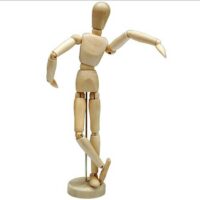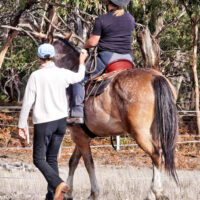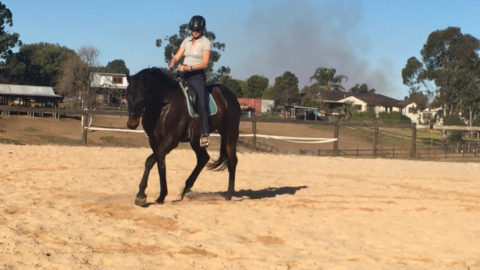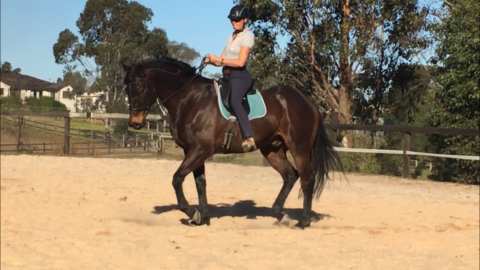Does Your Horse see Goblins and Munchkins?
It is worth the effort to take the time to take a real look at your horse from the ground up, no saddle, no bridle, completely “gadget-free”
Observe how the horse moves- neck, front legs, back legs, spine, core and rotations.
( You should always know your horse’s “normal” look and feel – and pay attention when something seems different)
Some horses are amazing, because they can just naturally flow and go from gait to gait and do all sorts of acrobatics and are completely in control of their body. Poetry in motion.
Well, others not so much, there is the giraffe look-a-like, sometimes a bit of a camel comes along to many lumps and bumps.
Or the clown show or crash test dummy.
We hold our breath as they look like they are going to hurt themselves or take out the gate while they misjudged the distance, or slip over- not always because of bad footing.
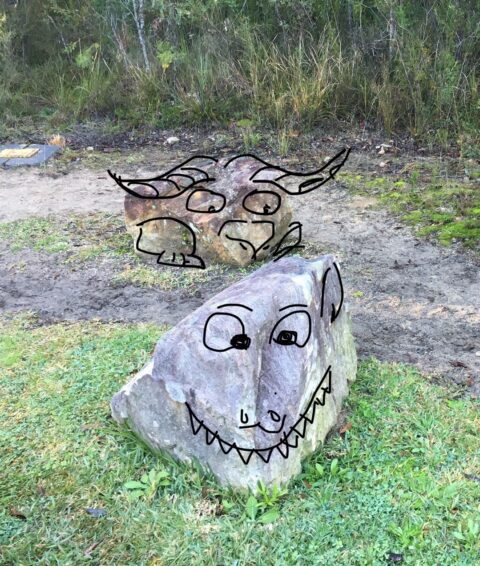
And what about the horse that sees monsters and goblins and gremlins in every corner, who shies at everything and nothing?!
If you pay close attention you actually notice one side is always worse than the other.
In most of these instances, there are some alignment and balance issues.
With good training, with good groundwork, lunging and riding, this can help them re– align their body, assist with placing their feet where they need them – and this will improve their appearance and manners.
Eventually, those (imagined) “goblins and munchkins” move to another area, as your horse grows in confidence and trusts you as a leader and partner. 😉
We need to teach the horse where its four legs are – and in time with feeling.
The awareness of each leg will become better and the muscles and ligaments start to strengthen.
With this, the insecurity will fade.
We need to remove the habits of resistance and bracing.
Use exercises to develop body awareness, balance, coordination and connection to each leg, while working on weight-bearing and releases.
Teaching a horse to find his own balance is not about forcing them into a position.
This is why I like a cavesson; it is light, yet easy to control and it will help the horse to find his balance in the schooling of groundwork or lunging.
It’s about guiding the horse to find the solutions in its own body.
The horse will learn to find its own balance, as he feels more in harmony with his own body, the horse will start to seek a healthier frame. A little bit like magic!
Your reward will be a happy and healthy horse.
Please always remember; each horse works in its own time and frame:
- It depends on each case, yes it can sometimes (often!) really take some time.
- For me, the first clear change is the horse’s willingness to be content and work with you.
- This often depends on the restrictions the horse has experienced previously.
- You sometimes find that they give you a distinct snarl or even a nip.
- Tread easy one step at the time.
- And let them ‘flop’ into a break here and there – relax, be playful– it helps you and the horse!
Also, be curious and ask questions.
If you stop asking questions of your horse,you stop searching for answers.
When you stop asking questions and searching for answers, you stop learning which will not improve the welfare of you …OR your horse.
Get a good Team assembled to help support you!
Use great equine body workers, an excellent farrier, saddle fitter, as well as a great coach.
These are professionals and on your horse’s side, with more knowledge than you may have.
Having these extra ‘resources’ to call on really improves your horse’s health and soundness for a long time to come.
It often amazes me when riders get on and ride their horses, but yet they are so disconnected from their horses it is not a partnership.
It seems to then be a continuous search for answers ( in perhaps the wrong places!)
ie It’s the bit, the saddle, the shoeing, body worker, the vet… everything else, but so often the rider takes themselves out of the equation.
Remember everything you do.. or do NOT do, impacts your horse.


